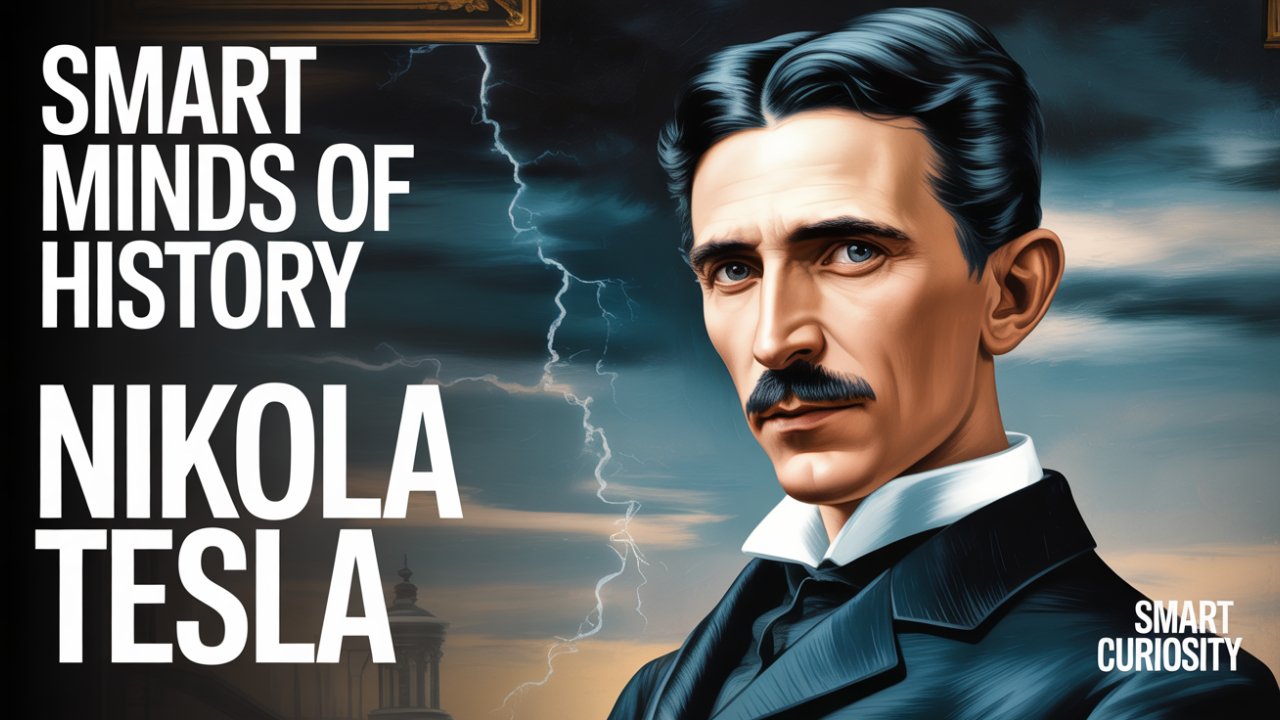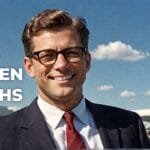January 8th, 1943. Within the imposing edifice of the Hotel New Yorker, a “do not disturb” sign has hung on the door of Room 3327 for days, a silent sentinel guarding a profound stillness. A maid, following protocol, lets herself in. The room is an ascetic’s cell, spare and quiet. There, she discovers the body of an 86-year-old man, an iconoclast who had died impoverished and utterly alone. In his final years, he had become a recluse, a figure known more for his peculiar, compulsive rituals and a deep, almost spiritual affection for the wild pigeons of Manhattan. To the world, he was a historical footnote, a forgotten eccentric whose intellectual incandescence had seemingly been extinguished decades prior.
But herein lies the magnificent, tragic irony: in the very instant his heart ceased to beat, the world outside his window blazed with a Promethean fire that he himself had unleashed. The lights of New York City, the alternating currents humming through a continent’s unseen metallic veins, the very electrical pulse of the modern age it was all, in large part, the architecture of his mind. This was the quiet, desolate end of Nikola Tesla, the man whose intellect conceived of the 21st century long before it arrived, but whose life devolved into a maelstrom of darkness, defined by bizarre obsessions and the crushing weight of professional rivalries.
To truly comprehend the paradox of his existence the staggering, world-altering genius and the profound, soul-deep loneliness we must journey back to its inception. To a moment of cosmic poetry, where his story commenced not in silence, but in the heart of a raging storm.
It was the midnight hour, bridging July 9th and 10th, 1856, in the small village of Smiljan, a pastoral corner of the Austrian Empire that is now modern-day Croatia. Outside, a ferocious electrical storm convulsed the landscape. As his mother, Georgina (Đuka) Mandić, was in the throes of labor, lightning tore the fabric of the night sky. The midwife, profoundly shaken by the storm’s elemental violence, declared it a terrible omen. “This child,” she prophesied with a voice full of dread, “will be a child of darkness.”
But Tesla’s mother a woman of formidable creativity who, despite being unschooled, possessed an innate engineering talent for crafting household tools gazed upon her newborn son and refused the grim prophecy. She replied with a conviction that would reverberate through history: “No. He will be a child of light.”
Never has a mother’s intuition been more spectacularly vindicated. This child, born of the storm, would mature to tame the very lightning that heralded his arrival. He would cultivate a mind so preternaturally bright it would illuminate the planet, yet he himself would remain a figure perpetually trapped in the shadows of his own narrative. This is the story of Nikola Tesla, the tragic genius who invented the modern world.
The boy who would one day wrestle with the fundamental forces of the cosmos grew up in a world steeped in nature and Orthodox religion. His father, Milutin Tesla, was a Serbian Orthodox priest, a man of letters and faith who ardently expected his son to follow him into the clergy. Yet, from his earliest years, it was profoundly evident that Nikola’s mind was wired for a different calling. He was not destined for the pulpit; he was destined for the laboratory.
His genius wasn’t merely apparent; it was startling, almost alien. He possessed a true eidetic memory, able to commit entire books to memory and recall impossibly complex images with crystalline clarity. Even more extraordinary was his power of “visualization.” He could design, construct, and rigorously test elaborate machinery entirely within the theater of his mind. It was as if he had a high-definition 3D simulator built into his brain, allowing him to perceive inventions in three-dimensional detail, watching them operate, and diagnosing flaws without ever touching a single tool or drafting a blueprint. He perfected his inventions in the pristine, frictionless workshop of his own imagination.
His fascination with electricity was kindled early, sparked by the crackle of static on his cat’s fur and the awesome, terrifying beauty of the lightning that rolled through his homeland. He was a student of such prodigious talent that he could perform integral calculus entirely in his head, a feat of mental agility that frequently led his bewildered teachers to suspect him of cheating. His path, however, was nearly derailed twice. The first deep trauma was the death of his older brother, Dane, in a riding accident. The loss would haunt Tesla for the remainder of his life, fueling a relentless, almost punishing drive to achieve a level of greatness that might somehow compensate for the void.
Then, at seventeen, his future was nearly stolen by cholera. The disease left him bedridden for nine agonizing months, a whisper away from death. It was in this moment of ultimate desperation that his father finally relented on his demand that Nikola join the priesthood. If you recover, he promised his ailing son, you can attend the finest engineering school in the world. It was the only motivation Tesla needed. He staged a seemingly miraculous recovery, cheating death and thereby securing his destiny. He was finally free to pursue his one true passion: to understand and harness the “wonderful force” of electricity.
True to his father’s solemn promise, Tesla enrolled at the Austrian Polytechnic in Graz, where his brilliance immediately distinguished him as a phenomenon. He was a voracious learner, absorbing knowledge with an intensity that both stunned and concerned his professors, claiming to work from the impossible hour of 3 a.m. until 11 p.m. It was here that he first encountered the Gramme dynamo, a machine that operated on direct current, or DC. Think of DC as electricity flowing down a one-way street. The problem was, the machine sparked and sputtered. Its inefficiency was rooted in its commutator a clumsy set of mechanical brushes that acted like a clunky, grinding gear shifter, prone to failure and needing constant repair.
His professors insisted the commutator was a necessary, albeit flawed, component. A motor without one was, they declared, an impossibility. Tesla profoundly disagreed. The concept of a superior system began to germinate in his mind. He envisioned a motor powered not by a steady, one-way flow, but by alternating current, or AC where the electrical current pulses back and forth, like the tide. This rhythmic pulse, he theorized, would create a rotating magnetic field an invisible, seamless whirlwind of force that could spin a motor smoothly without any physical contact, like a ghost turning a wheel. It was a revolutionary concept, one his professors dismissed as little more than poetic fantasy.
After leaving Graz, Tesla eventually relocated to Budapest to work for a telegraph company. It was there, while walking through a city park with a friend and reciting stanzas of poetry, that the complete solution to the AC motor materialized in his mind in a single, blinding flash of insight. He saw it, fully formed, a perfect intellectual creation. Using a stick, he drew the diagram in the dust of the path the schematics for a motor that would fundamentally re-engineer the world.
He then moved to Paris, taking a position with the Continental Edison Company. He proved to be a star employee, but his thoughts were consumed by his AC motor. His superiors, though impressed by his talent, were unwilling to invest in such a radical departure from the established norm. They told him there was only one man who might possess the vision to understand the industrial titan building an empire of electricity in America: Thomas Edison.
In 1884, with merely four cents in his pocket, a book of poetry, and a letter of introduction, Nikola Tesla boarded a ship for New York City. The letter, penned by one of Edison’s European managers, contained a legendary endorsement: “My Dear Edison: I know two great men and you are one of them; the other is this young man.” Tesla was sailing toward his destiny, and his greatest rival.
When Nikola Tesla walked into Thomas Edison’s workshop in 1884, it was a meeting of two fundamentally different paradigms of genius. Edison was like a master chef, constantly tasting and adjusting his recipe through trial and error, with an unwavering eye for a dish that would sell. He famously declared his method was “one percent inspiration and ninety-nine percent perspiration.” Tesla, by contrast, was an architect, a visionary who would design an entire skyscraper flawlessly in his mind before a single stone was laid.
Edison, already world-famous for the incandescent light bulb, had constructed his empire on the foundation of direct current (DC). DC was functionally simple, but it suffered a fatal flaw: it was incapable of traveling long distances without debilitating power loss. It was like trying to push water through an incredibly long, leaky hose by the time it reached its destination, you were left with just a trickle. This necessitated that DC power plants be situated within roughly a mile of their customers, an immense logistical and economic limitation.
Edison was initially impressed by the young Serb’s intellectual fire and hired him on the spot. Tesla was assigned the formidable task of improving Edison’s inefficient DC generators. According to Tesla’s own account, his manager offered him a staggering fifty thousand dollars a veritable fortune at the time if he could successfully execute a complete redesign.
Tesla immersed himself in the work, and after months of relentless labor, he delivered a series of massive improvements to Edison’s system. When he approached his superior to collect the promised bonus, Edison merely chuckled. “Tesla,” he reportedly said, “you don’t understand our American humor.” In lieu of the life-changing sum, he offered a paltry ten-dollar-a-week raise.
For Tesla, this was far more than a financial betrayal; it was a profound insult to his genius, a debasement of his intellectual honor. He resigned immediately. The brief, bitter partnership had dissolved. For a period, Tesla was reduced to digging ditches for two dollars a day simply to survive, a chapter he would later describe as one of terrible, soul-crushing hardship.
But the schism with Edison also liberated him. He had attempted to interest Edison in his revolutionary AC motor, but Edison, deeply and financially invested in his DC infrastructure, had dismissed it as impractical and dangerously volatile. This was never just a technical disagreement. It was a clash of philosophies, a collision between the man who had lit up a single city block and the man who dreamed of illuminating the entire world. Their rivalry was about to escalate into a full-scale war for the future of electricity itself.
After the break from Edison, Tesla found new backers in 1887 and established the Tesla Electric Company. Here, in his own laboratory, he finally perfected and patented his groundbreaking AC system: not merely the induction motor, but the entire ecosystem of generators, transformers, and transmission lines that could deliver power efficiently across vast geographical distances.
This monumental achievement captured the attention of George Westinghouse, a brilliant industrialist and inventor in his own right, who immediately grasped the revolutionary potential of alternating current. In 1888, Westinghouse acquired Tesla’s patents for a reported $60,000 in cash and stock, plus a generous royalty agreement. The visionary inventor and the pragmatic industrialist had formed a powerful, symbiotic alliance. The stage was now set for the War of the Currents.
Edison, witnessing his DC empire facing an existential threat, launched a vicious and cynical smear campaign to convince the public that AC was a deadly, uncontrollable menace. His company staged gruesome public spectacles, electrocuting stray animals dogs, cats, and even horses using Westinghouse’s AC generators to “prove” how lethally dangerous the rival technology was. The campaign was pure, calculated fear-mongering.
The propaganda war reached a horrifying climax when the state of New York adopted a new method of execution: the electric chair. Edison, despite professing a personal opposition to capital punishment, cynically advocated for the use of alternating current. He and his allies worked behind the scenes to ensure the first chair was powered by a Westinghouse AC generator, hoping the press would irrevocably brand the technology as the “executioner’s current.” The first execution in 1890 was horribly botched, a macabre and tragic event that provided grim fodder for Edison’s campaign.
Ultimately, however, the war would be won not by fear, but by spectacle. The decisive battleground was the 1893 World’s Columbian Exposition in Chicago. Both General Electric (the new conglomerate formed from Edison’s company) and Westinghouse submitted bids to illuminate the fair. Westinghouse, leveraging the supreme efficiency of Tesla’s AC system, undercut GE’s bid by more than half and won the historic contract.
On opening night, President Grover Cleveland pressed a single button, and in an instant, nearly one hundred thousand lamps bathed the fairgrounds in an incandescent ocean of brilliant, unprecedented light. The “City of Light” was born, powered by twelve of Tesla’s massive AC generators housed in the Hall of Machinery. For the 27 million people who attended the exposition, it was a breathtaking, transformative spectacle that proved, once and for all, the superiority, safety, and sublime beauty of alternating current. The War of the Currents was over. Tesla and Westinghouse had triumphed. The future would be powered by AC.
Vindicated by the triumph of the Chicago World’s Fair, Tesla entered the most spectacular and theatrical phase of his career. Now a bona fide celebrity scientist, he dazzled New York high society and mesmerized public audiences with his dramatic demonstrations. His laboratory became a place of modern magic, a stage where he played the role of a sorcerer conjuring the forces of nature.
His most iconic invention from this era is the Tesla Coil, a resonant transformer circuit. Think of it like a special trumpet that doesn’t amplify sound, but instead takes a small hum of electricity and amplifies its voltage to a deafening, high-frequency scream. In his demonstrations, he would stand amidst a storm of this man-made lightning, allowing millions of volts of electricity to dance harmlessly across his body and illuminate a wireless bulb held aloft in his hand. These were not mere parlor tricks; they were audacious experiments, pushing the very boundaries of electrical engineering and human understanding.
He pioneered concepts for fluorescent and neon lighting and, in 1898, unveiled a device that seemed to have arrived directly from the future: the world’s first remote-controlled boat. The crowd was astounded, with some shouting accusations of witchcraft and others speculating that a tiny, trained monkey was hidden inside, piloting the craft. What they were actually witnessing was the birth of robotics and all modern drone technology.
Yet his ambitions expanded to an even grander, almost cosmic scale. He became unshakably convinced that energy itself could be transmitted wirelessly, not just across a room, but through the very atmosphere of the Earth. He essentially wanted to turn the planet itself into a giant, wireless charging pad. To test his theories, he established an experimental station in the high altitudes of Colorado Springs in 1899. There, he constructed his largest and most powerful Tesla Coil ever built. The experiments were legendary. He generated discharges of millions of volts, creating massive, hundred-foot bolts of artificial lightning that illuminated the prairie for miles and reportedly caused butterflies to be surrounded by coronas of St. Elmo’s fire. He conducted stunning demonstrations, lighting banks of lamps wirelessly from a significant distance. It was also here that he claimed to have detected strange, rhythmic signals which he audaciously believed could be intelligent communications from another planet.
The established scientific community scoffed at such claims, but for Tesla, it was confirmation that he stood on the precipice of his greatest breakthrough. He had demonstrated the transmission of power wirelessly. Now, he intended to construct a system that could achieve it on a global scale. He returned to New York with a vision to erect a tower that would provide the entire world with free, wireless energy.
Fueled by the discoveries made in Colorado, Tesla embarked on his most magnificent and, ultimately, his most tragic project: the Wardenclyffe Tower. He envisioned a “World Wireless System” that would not only transmit messages and images instantaneously across oceans but would also beam electrical power through the air itself, providing limitless, free energy to every person on the planet. It was a technological utopia made manifest.
To finance this dream, he turned to the immensely powerful financier J.P. Morgan, who in 1901 agreed to invest $150,000. But there was a critical, fatal misunderstanding. Tesla, in his pitch, emphasized the tower’s capacity to send radio messages across the Atlantic, thereby beating his rival Guglielmo Marconi to the punch. He was deliberately less forthcoming about his true, more radical ambition of free wireless power. Morgan was a consummate businessman; he was investing in a wireless telegraph monopoly, not a philanthropic global energy grid from which he could never profit.
Construction began in Shoreham, Long Island. A massive, 187-foot tower began to ascend, capped with a giant copper dome. But the project was an immense engineering challenge, and costs began to spiral out of control. Then came the devastating blow. In December 1901, Guglielmo Marconi, using simpler and far less expensive equipment, successfully transmitted the first transatlantic radio signal a single letter ‘S’. To investors like Morgan, it appeared that Marconi had already won the race.
Tesla pleaded with Morgan for additional funding, finally revealing his full, magnificent vision of wireless power for all. This revelation served as the project’s death knell. Why, Morgan reasoned with cold logic, would he fund a system that allowed people to draw power for free? As he famously asked, where could he put the meter? Morgan refused to invest another dollar.
Cut off from his primary backer, Tesla frantically sought other investors, but none would step forward. The project ground to a halt. For years, the magnificent, skeletal tower stood as a silent, decaying monument to Tesla’s shattered dream. Its failure represented his greatest and most public defeat. Mired in debt, Tesla eventually lost the property, and in 1917, the tower was demolished for scrap metal during World War I. The dream of a world with free, abundant energy was dismantled and sold for parts.
The failure of Wardenclyffe marked the beginning of a long, sorrowful decline. The public acclaim and scientific celebrity of the 1890s vanished, replaced by persistent financial hardship and professional isolation. Though he continued to invent, filing patents and making sensational claims about a “death ray” capable of destroying entire armies, his ideas grew more outlandish, and he struggled to find anyone in the scientific or financial communities who would take them seriously.
He lived a nomadic, almost spectral existence, moving from one New York hotel to another, frequently leaving behind a trail of unpaid bills. He devolved into a recluse, a figure known more for his peculiar habits than for the world-changing inventions of his past.
His eccentricities, once seen as the quirks of a genius, bloomed into full-blown, debilitating obsessions. He developed a severe aversion to germs, washing his hands compulsively. He became obsessed with the number three, compelled to walk around a block three times before entering a building. He cultivated a strange, visceral revulsion to pearls and would refuse to speak to any woman wearing them.
His most famous and poignant obsession was with pigeons. He walked daily to the parks and squares of New York to feed them, taking injured birds back to his hotel room to nurse them back to health. They became his only real companions, the sole recipients of his affection.
There was one pigeon, a pure white female, that he claimed to love “as a man loves a woman.” He recounted that in 1922, the pigeon flew into his room, as if to tell him she was dying. As she passed, he claimed, a brilliant, blinding white light shone from her eyes. After her death, Tesla was inconsolable, telling a friend that at that moment, he felt his life’s work was finally and truly finished.
It is a bizarre, heartbreaking anecdote that perfectly captures the profound isolation of his final decades. The man who had once dreamed of powering an entire planet now found his only solace in the quiet, gentle company of birds. He was a ghost haunting the very city he had helped to build, a tragic genius living in the long shadow of his own brilliant past.
Nikola Tesla died on January 7, 1943, alone in his hotel room. In the immediate aftermath, many viewed him as a brilliant but ultimately failed genius, a cautionary tale. But history is a patient and discerning judge. In the decades that have passed since his death, the true scale of his contributions has come into sharp focus, and his legacy has undergone a monumental resurrection.
The world we inhabit today is, in countless and fundamental ways, a Tesla world. Every time you plug an appliance into a wall outlet, you are tapping into the alternating current (AC) system that he championed and perfected. His AC induction motor remains a cornerstone of modern industry and domestic life, powering everything from household blenders to the massive machinery that drives our civilization.
His visionary work laid the conceptual groundwork for radio, television, remote control, robotics, and even radar. His dream of a “World Wireless System,” once dismissed as fantasy, clearly presaged the interconnected, data-driven world of the internet. In a fitting tribute from the scientific community he often felt alienated from, the unit of magnetic flux density is named the “tesla” in his honor. Just as we measure distance in meters or weight in pounds, we measure the strength of a magnetic field in teslas.
His name, once relegated to dusty, esoteric history books, is now globally synonymous with innovation. It graces one of the most transformative and forward-thinking companies of the 21st century, Tesla, Inc., a fitting and powerful tribute to the man who first dreamed of a truly electric future.
Tesla was a man out of time, a mind that operated on a frequency few could comprehend. He was a tragic genius, betrayed by commercial rivals and abandoned by financiers who lacked his vision. He died in poverty, but he left the world immeasurably and incalculably rich. His life stands as a powerful, enduring reminder that the path of true, paradigm-shifting innovation is rarely easy and often fraught with sacrifice.
In the end, his own words serve as his most fitting epitaph. “The present is theirs,” he once said, referring to his competitors. “The future, for which I have really worked, is mine.” Today, as we live in that very future a world illuminated, powered, and connected by his dreams it is clear that Nikola Tesla, the child of light, was finally, and definitively, proven right.
If you were captivated by the story of Nikola Tesla, make sure to subscribe and hit that notification bell for more “Smart Minds of History.” Let us know in the comments which genius you’d like us to uncover next. And if you enjoyed this journey, please give this video a like and share it with someone who needs to hear this incredible story.
The story of Nikola Tesla is a grand symphony of light and shadow. It is the tale of a mind that could visualize lightning in a jar but struggled profoundly to navigate the currents of the human world. He gifted us the very current that powers our civilization, yet died without the resources to live comfortably within it. He dreamed of connecting the world wirelessly, yet died in a state of profound and tragic isolation. His life is both a cautionary tale about the brutal intersection of commerce and competition, and an inspirational saga about the indomitable power of a single brilliant idea to change the world. From the violent lightning storm of his birth to the global electrical grid he envisioned, Nikola Tesla’s life proves that a single spark of genius can, indeed, illuminate the entire planet. Thanks for watching.





